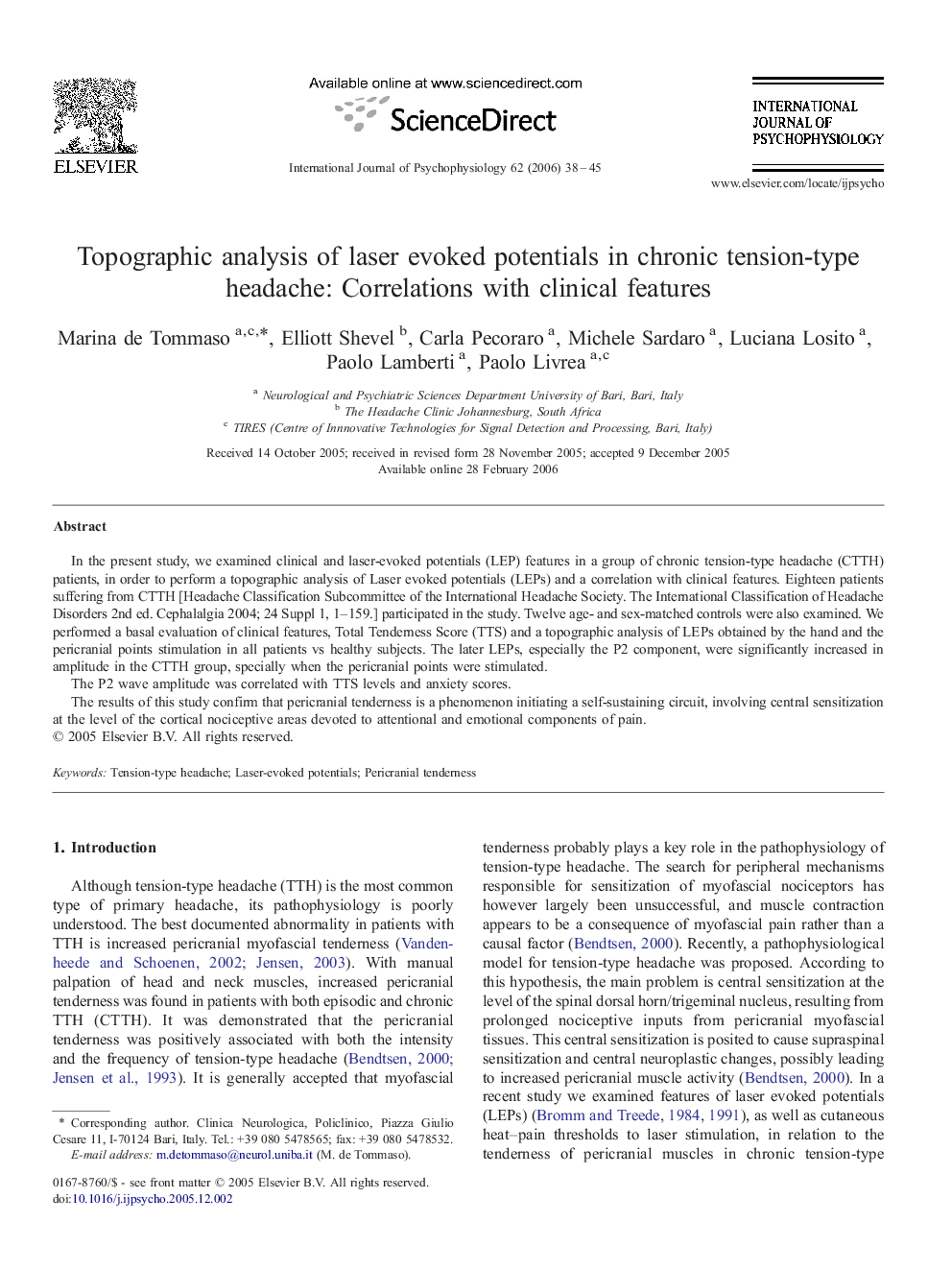| Article ID | Journal | Published Year | Pages | File Type |
|---|---|---|---|---|
| 931326 | International Journal of Psychophysiology | 2006 | 8 Pages |
In the present study, we examined clinical and laser-evoked potentials (LEP) features in a group of chronic tension-type headache (CTTH) patients, in order to perform a topographic analysis of Laser evoked potentials (LEPs) and a correlation with clinical features. Eighteen patients suffering from CTTH [Headache Classification Subcommittee of the International Headache Society. The International Classification of Headache Disorders 2nd ed. Cephalalgia 2004; 24 Suppl 1, 1–159.] participated in the study. Twelve age- and sex-matched controls were also examined. We performed a basal evaluation of clinical features, Total Tenderness Score (TTS) and a topographic analysis of LEPs obtained by the hand and the pericranial points stimulation in all patients vs healthy subjects. The later LEPs, especially the P2 component, were significantly increased in amplitude in the CTTH group, specially when the pericranial points were stimulated.The P2 wave amplitude was correlated with TTS levels and anxiety scores.The results of this study confirm that pericranial tenderness is a phenomenon initiating a self-sustaining circuit, involving central sensitization at the level of the cortical nociceptive areas devoted to attentional and emotional components of pain.
